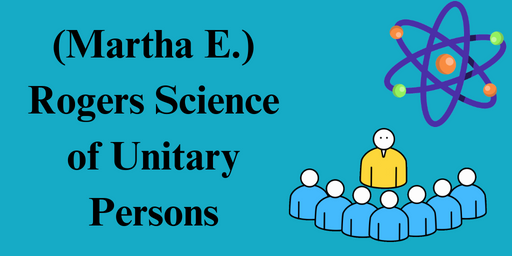Unitary Persons Theory By Martha E Rogers
%20Rogers%20Science%20of%20Unitary%20Persons.png)
%20Rogers%20Science%20of%20Unitary%20Persons.png)
Rogers Science of Unitary Persons
Since 1970, when Martha Rogers initially published The Science of
Irreducible Unitary conceptual model has varied. The work has been described as
too abstract to be useful in practice; yet its influence on practice, research,
and education continue to grow internationally.
Model and Its Origin and Need
The model is derived from many disciplines and results in an integrated whole, unique to nursing. It does not set out to define practice, but is considered a means of stimulating the development of a body of knowledge. It is simple and elegant in design, although it did not seem so initially.
It is important to understand that when she first wrote her book, we had just come out of one of the most tumultuous decades in American history: the 1960s. We were still grappling with an event that had stunned the nation the assassination of a vibrant young president shown repeatedly and graphically, for the first time in our history, on television.
To understand
the mood, one can compare it to the relentless replay of 9/11/01-the fall of
the World Trade Center towers and the devastating and prolonged after effects
of this experience for people in this country. We were in the grip of the war
in Vietnam, which divided the country in ways similar to the war in Iraq today.
We had just landed a man on the moon and Woodstock and the Beatles were to
become national icons.
Change to the Traditional Clinical Setup
The majority of nurses were graduates of diploma schools. The mode was to follow the doctor's orders and the oral tradition of previous generations of nurses. Few thoughts of a career in nursing as being more than just a job.
We thought that “we”-the medical experts, led by the physician, knew what was best, and that patient's needed to learn to be compliant with what we prescribed and advised.
Nursing theory did not exist.Within this cultural framework, Rogers writes about the natural process of change, the inherent quality of human beings' right to choose, and the infinite nature of the relationship between man and the universe.
Her description of nursing as a learned profession, resulting from a strong academic preparation and based on knowledge unique to nursing, was equally stunning and controversial.
Martha Concept and Human Nature
Through 1994, she revised and refined her theory. She makes several assumptions to be tested so that further nursing knowledge can be formulated: the human being is greater than the sum of its parts: there is constant, progressive interaction between the human being and environment; the environment is infinite it extends to the universe and be yond: reality is as it appears it is constructed; energy is matter is energy, the human being can choose to engage in change.
Postulates of Theory
Rogers defines four postulates as the basis of his
theory:
- Energy fields-in Rogers' world we are energy fields, as is everything around us. She uses the term “unitary” to describe the indivisible and irreducible nature of the human being environment interaction.
- Openness an attribute of all energy fields a constant mutual interaction and flow, as opposed to a cause-and-effect relationship.
- Pattern the manifestation of energy fields and exchange which is experienced and known by all senses, including intuition.
- Pan dimensionality the boundlessness of the universe, without spatial or linear limits.
Principles of Theory
In unison with these assumptions and postulates she proposed three
principles of homeodynamics:
Propellers continuous, nonrepetitive and innovative patterning (moving forward/ diversifying). Resonance patterning which changes from lower to higher frequency (responsiveness increasing vibration). Integrality the continuous mutual process between person and environment (feeling “at one” with the universe).
Rogers, whatever one's opinion of her the ory, has to be
credited with thinking “outside of the box” (another unfamiliar concept in
1970).
Marthas' Achievements
Her accomplishments were remarkable for the nursing profession. She established that professional nursing required knowledge gleaned from the arts and science and self understanding on the part of the individual nurse.
She provided the basis for the formulation of nursing theory. She understood that ongoing change, which is inherent in her theory, applied to her own work and she revised it accordingly until her death on March 13, 1994.
She studied and understood information from all she read and experienced and synthesized it into a body of knowledge unique to nursing.
Martha Rogers epitomized her theory: open, constantly changing,
diverse, thinking without boundaries, and resonating to her world, her
profession, and the future.




Give your opinion if have any.